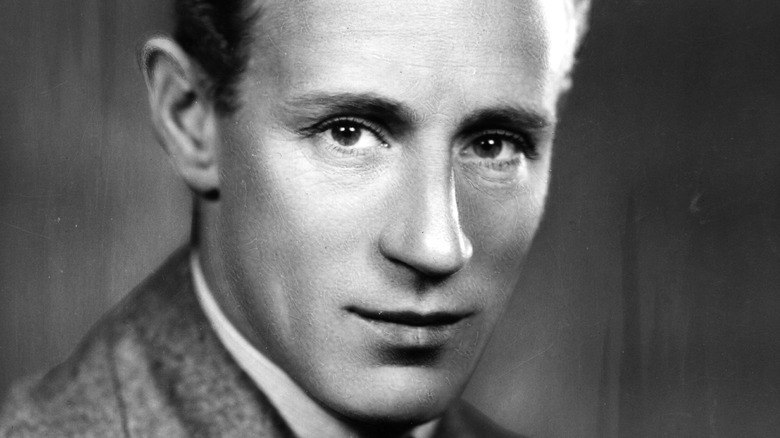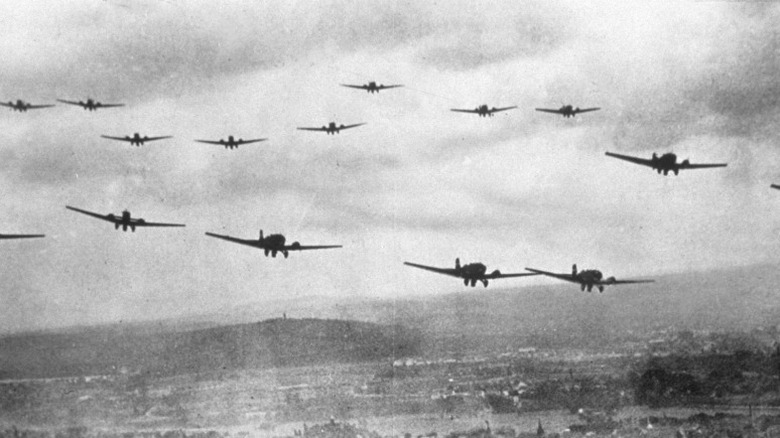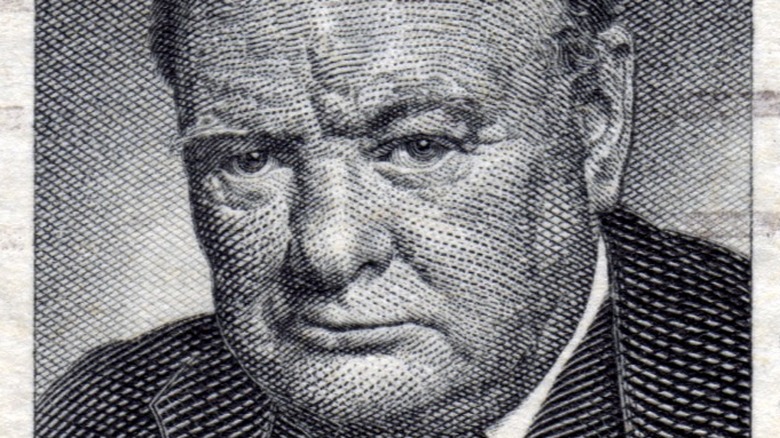Gone With The Wind Star Leslie Howard's Mysterious And Tragic 1943 Death
Hollywood producer David O. Selznick knew that the epic 1936 novel "Gone with the Wind" would likely be an opus for International Pictures and was chomping at the bit to secure the rights to project the words of Margaret Mitchell onto the big screen. His dream became a reality when the finished film was finally released on December 15, 1939, to major fanfare. The premiere in Atlanta was the focal point of three days of festivities that led some 300,000 people to line the streets more than 7 miles just to get a glimpse of stars Vivien Leigh, Clark Gable, and Selznick being driven into town by a procession of limousines (via Time Magazine).
"Gone with the Wind" would go on to be an international success for the studio and cement a place in Hollywood history for the cast of familiar stars and new additions to Tinsel Town. Yahoo News reports that the nearly four-hour saga would go to bring in nearly $200 million in 1939 dollars, which amounts to around $1.75 billion when adjusted for inflation. It was also graced with numerous awards and accolades from the industry — it was nominated for an astounding 14 Academy Awards the following year, securing nine Oscars, including statuettes for Leigh and Hattie McDaniel.
Among the cast was two-time Oscar nominee Leslie Howard, who was a sought-after talent on movie sets in his own right. The British actor was a popular stage performer on Broadway before breaking into film. At 50, he still had a bright future ahead of him when his life was tragically cut short (via Britannica).
Howard's plane was shot down by German aircraft
The world was at war (again) that June morning when Leslie Howard boarded a civilian aircraft in Lisbon, Portugal to make his way to London (via Britannica). The flight seemed a normal one from the outset, carrying the Hollywood star and 16 others over the sea to the British isles (via Yahoo News). All seemed to go according to plan until around noon when the plane radioed two disturbing messages. In the first one, the pilot relayed his concerns that an unknown aircraft was following his plane. His second message was more ominous. "Being attacked by enemy aircraft" were the words he transmitted before going silent forever.
The plane, known by the name "Ibis," vanished from radar and plummeted into the sea. It would later be revealed that a fleet of six to eight Ju-88 German fighter planes had crossed paths with the Ibis while on patrol over the seas (per Warfare History Network). These planes began tailing the Ibis as it flew just below 10,000 feet above the ocean and opened fire on it with cannons and machine guns before it could soar higher into the camouflage of the clouds.
After these Luftwaffe planes sent the Ibis spiraling downward to the seabed below, at least one of the pilots from the Nazi squadron took aerial photographs of the Ibis's wreckage. But why shoot down a non-military plane? That's where some interesting theories come into play.
The Germans may have believed that Winston Churchill was on board the Ibis
On the plane with Leslie Howard was his manager, Alfred Chenhalls, who resembled British Prime Minister Winston Churchill. He was a balding and portly man, wearing a hat with a similar style to the Allied leader. His penchant for cigar smoking was a habit he shared with Churchill, perhaps leading the Nazis to believe that was in tow with the rest of the passengers on the Ibis (via Yahoo News). Years later, Churchill would reflect on this theory in his memoirs, noting, "The brutality of the Germans was only matched by the stupidity of their agents."
Another theory about the Ibis being targeted by the Luftwaffe involved Howard being the primary target. In one German communique, Howard was mistaken for an aircraft manufacturer, perhaps helped along by the fact that he would soon be boarding the ill-fated plane that carried Shell Oil executive Tyrell Shervington. Further casting a shadow over Howard was the Nazi supposition that he had been in Portugal to set up a meeting with Spanish leader Francisco Franco to convince the general to join Allied forces.
Howard may also have been the target due to a film he made in 1941, "Pimpernel Smith," in which the actor plays a man who helps civilians escape from the clutches of the oppressive Third Reich (via Warfare History Network). This was brought to the attention of the Nazi propaganda machine, headed by Joseph Goebbels, who authored the newspaper headline after Howard's death that read (via Yahoo News), "Pimpernel Smith has made his last trip!"


